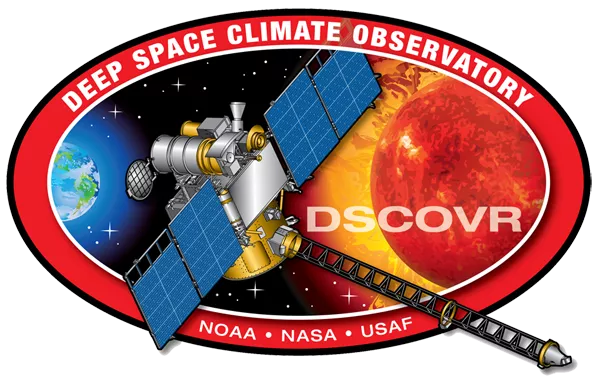
The Deep Space Climate Observatory, or DSCOVR, was launched in February of 2015, and maintains the nation's real-time solar wind monitoring capabilities, which are critical to the accuracy and lead time of NOAA's space weather alerts and forecasts. Without timely and accurate warnings, space weather events—like geomagnetic storms—have the potential to disrupt nearly every major public infrastructure system on Earth, including power grids, telecommunications, aviation and GPS.
The DSCOVR mission succeeded NASA's Advanced Composition Explorer's (ACE) role in supporting solar wind alerts and warnings from the L1 orbit, which is the neutral gravity point between the Earth and Sun, approximately one million miles from Earth. L1 is a good position from which to monitor the Sun, because the constant stream of particles from the Sun (the solar wind) reaches L1 up to an hour before reaching Earth.
From this position, DSCOVR can typically provide 15- to 60-minute advanced warning before a storm of particles and magnetic field, known as a coronal mass ejection (or CME), reaches Earth. DSCOVR data also helps improve predictions of geomagnetic storm impact locations. Our national security and economic well-being, which depend on advanced technologies, are at risk without these advanced warnings.
Information about the DSCOVR Program
The DSCOVR Space Weather Data Portal houses data collected from the satellite's magnetometer and faraday cup measurements along with additional information.
Beginning in October 2020, Engineers will begin performing regular Solar Exclusion Zone (SEZ) maneuvers in order to keep the spacecraft from drifting in front of the sun, which typically causes communication interference.
NASA and NOAA (SWPC and OSPO) are actively monitoring Faraday Cup behavior in various solar wind conditions, and developing or updating flight software solutions to optimize the instrument behavior. The most recent modification was performed in August 2020, and additional work is ongoing.
At the end of 2018, the Z-Axis Gyro laser in the Miniature Inertial Measurement Unit (MIMU) began showing signs of degradation. Without the MIMU, the spacecraft would be unable to function in its normal (Science mode) configuration, so Engineers consulted with NASA to determine the impact of the loss of the laser, and began developing mitigation procedures. To preserve the life of the laser (and MIMU) while solutions were developed, Engineers and NASA agreed to turn off the MIMU (which required the satellite to be placed into Long-Term Safe Hold mode) in July of 2019. Over the subsequent months, NASA and OSPO developed a flight software modification to force the satellite to use the Star Tracker for attitude determination (instead of the MIMU); this flight software modification was implemented in February of 2020. After a re-commissioning period, DSCOVR was placed back into Science mode in March 2020 with modified maneuver and slew procedures.
- DSCOVR Program Overview Information Sheet (PDF)
- DSCOVR Glossary (PDF)
- DSCOVR Quick Reference (PDF)
- DSCOVR Enhanced Polychromatic Imaging Camera (EPIC) (PDF)
- DSCOVR National Institute of Standards and Technology Advanced Radiometer (NISTAR) (PDF)
- DSCOVR Plasma-Magnetometer (PlasMag) (PDF)
- What is DSCOVR? (NASA Science)
Related News
-
NASA Awards Contracts for NOAA Coronagraph Instrument Phase A Study
-
On April 21, 2023, a coronal mass ejection (CME) erupted from the sun, spewing out a burst of…
-
We’re spreading the love again this Valentine's Day with a new collection of satellite-themed…
-
We’re spreading the love again this Valentine's Day with a new collection of satellite-themed…
-
Thursday, April 22, 2021NOAA’s Earth-observing satellites not only collect important environmental…
-
On this day in 2015, NOAA’s Deep Space Climate Observatory (DSCOVR) launched on a SpaceX Falcon 9…
-
Tonight will be the biggest and brightest full moon, colloquially called a "supermoon,"…
-
NOAA's Deep Space Climate Observatory (DSCOVR) satellite, which had been offline for about…